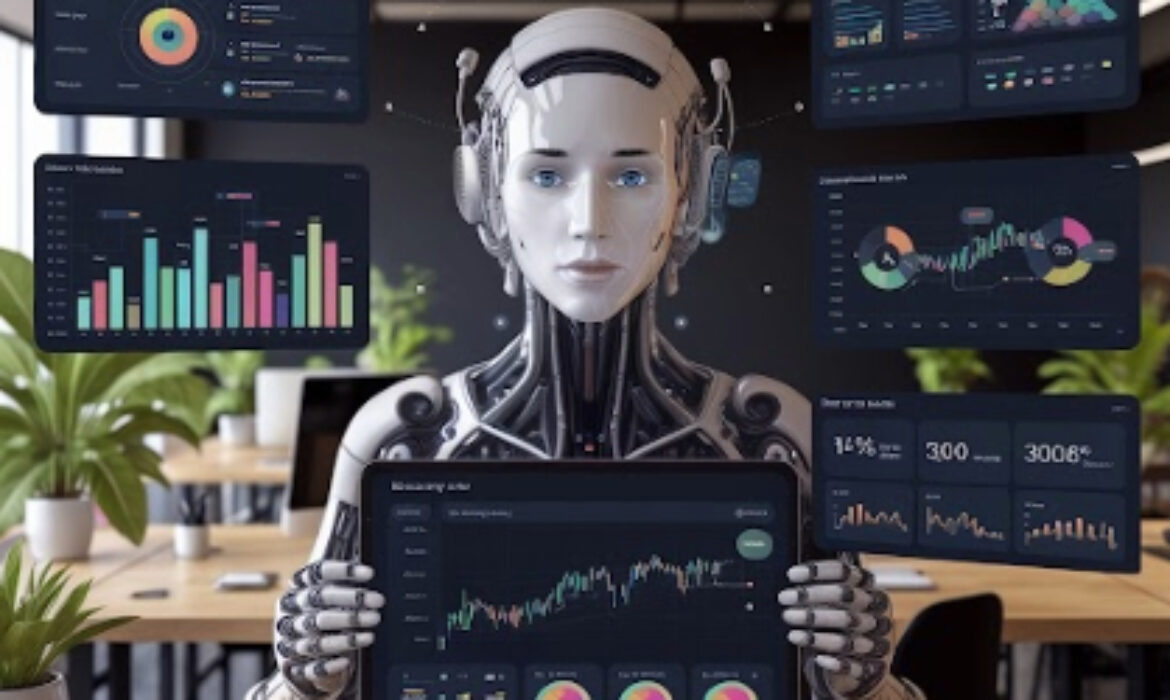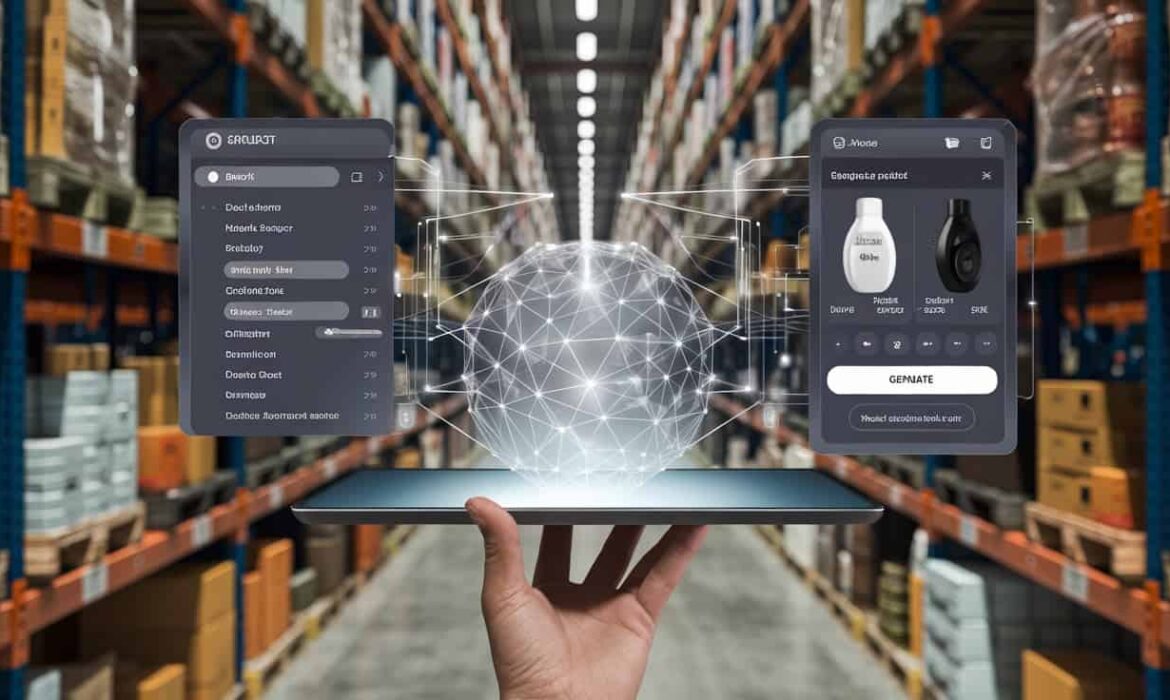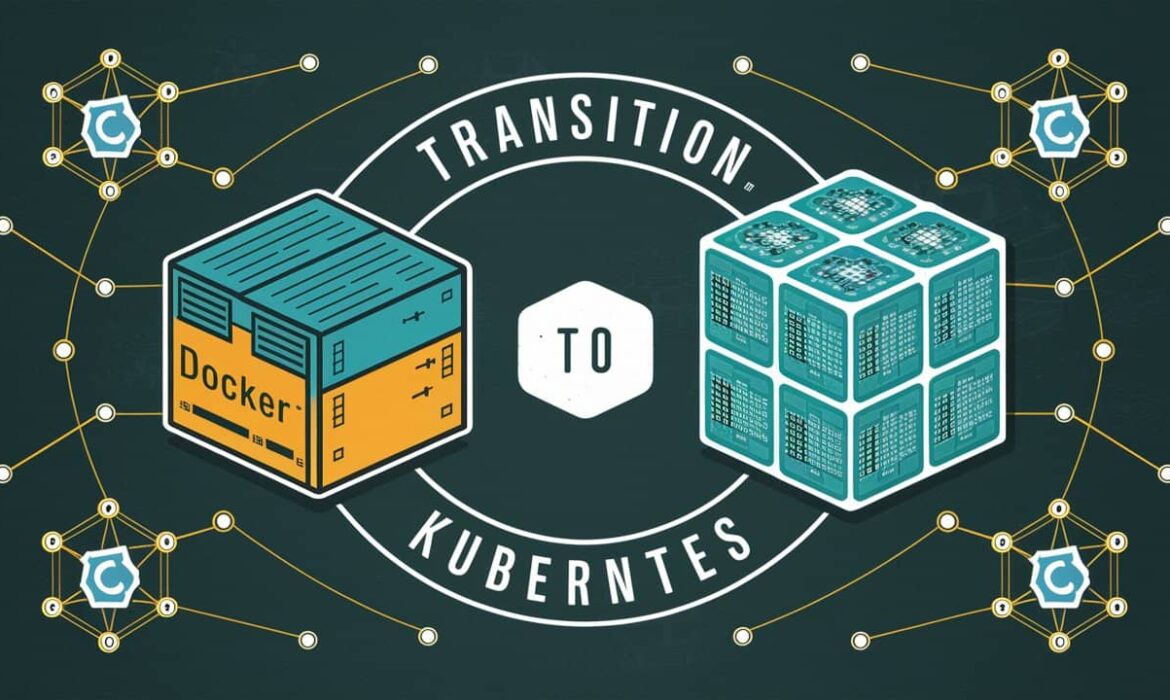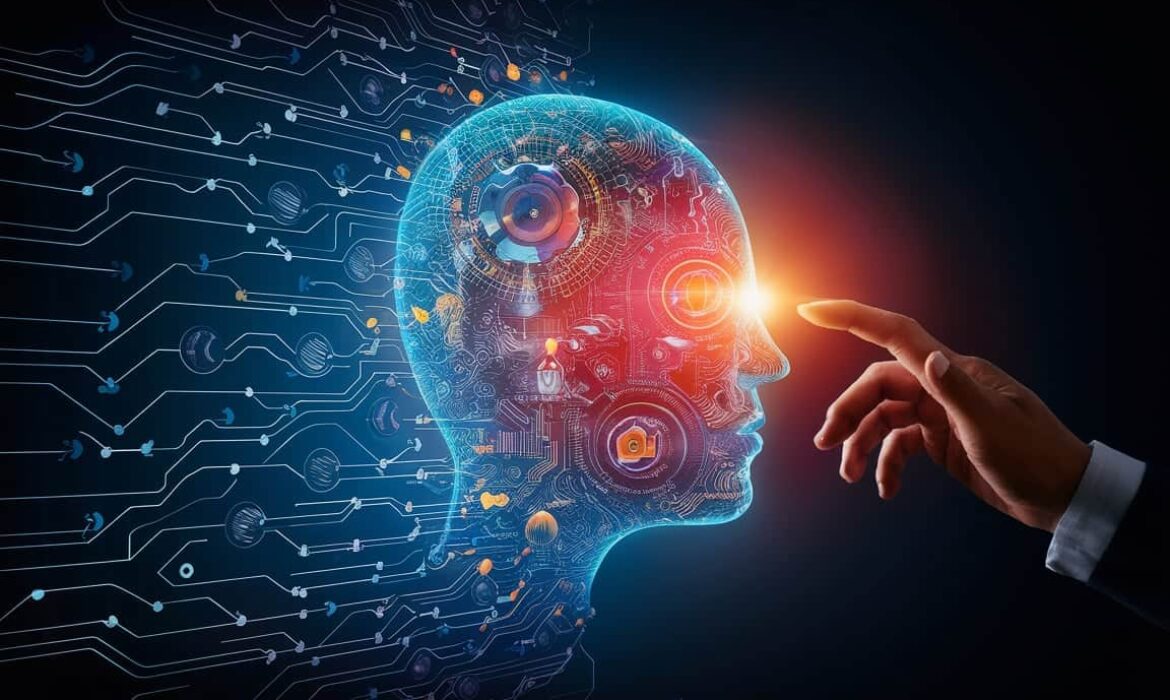Transforming Healthcare Management: Overcoming Challenges with AI Solutions
History of Healthcare Management
Healthcare management has historically grappled with numerous challenges, such as rising costs and administrative inefficiencies. For example, before the introduction of AI, hospitals often relied on cumbersome paper-based systems for patient records, which were prone to errors. A nurse might accidentally misread a patient’s handwritten chart, potentially leading to incorrect medication administration. These outdated practices not only delayed care but also strained healthcare professionals, ultimately compromising patient outcomes and increasing operational burdens.
The introduction of AI is revolutionizing healthcare management by enabling accurate data analysis and streamlining administrative tasks. For instance, AI-driven tools like chatbots can handle patient inquiries, schedule appointments, and provide medical information, significantly reducing the workload on administrative staff. Additionally, AI algorithms can analyze patient data to predict health risks, allowing providers to offer proactive care. This not only improves decision-making and enhances patient care but also fosters a more responsive healthcare system, ultimately leading to better experiences for both patients and providers.
AI’s Impact on Healthcare Administrative Processes
AI is transforming healthcare administration by optimizing processes like appointment scheduling. Platforms such as Zocdoc use AI to match patients with providers based on availability and preferences, reducing double bookings and no-shows. This approach streamlines scheduling and allows healthcare staff to focus on delivering quality care.
In billing and claims processing, AI platforms like Olive AI automate repetitive tasks, from extracting billing information to verifying codes. This reduces errors and speeds up payment processes, benefiting both healthcare providers and patients. By automating these tasks, AI allows staff to dedicate more time to patient-focused activities.
Key Challenges in Healthcare Management AI
Inconsistent Data Quality
AI systems require accurate and high-quality data, but many healthcare organizations struggle with inconsistent or fragmented information across various systems. For example, when a hospital’s electronic health record (EHR) system does not integrate with its lab results system, critical data may be missing, leading to inaccurate diagnoses or treatment recommendations.
Fragmented Systems
Interoperability, or the ability of different systems to communicate and exchange data seamlessly, is a significant challenge for healthcare organizations. Disparate software solutions may hinder coordinated care; for instance, a patient’s medical history recorded at one hospital might not be accessible to another using a different platform, complicating AI’s ability to provide comprehensive insights.
Navigating Regulatory Landscapes
Healthcare is a heavily regulated field, and integrating AI technologies must comply with strict guidelines regarding patient data privacy and security, such as those outlined by HIPAA in the United States. This regulatory complexity can impede the adoption of AI, as organizations may risk legal penalties if they do not adhere to these requirements.
Cultural Resistance to Innovation
Introducing AI technologies can meet resistance from healthcare professionals who are used to traditional methods. Many may fear job displacement or question the reliability of AI systems. For example, radiologists may hesitate to adopt AI diagnostic tools due to concerns about their expertise being undermined. Overcoming this resistance necessitates effective training and demonstrating AI’s ability to enhance human decision-making.
Improving Patient Care Through AI Innovations
AI innovations are transforming patient care by enhancing diagnosis, treatment, and personal engagement. Intelligent algorithms analyze vast amounts of healthcare data—including medical histories, imaging, and genomics—to identify patterns and predict patient outcomes, enabling earlier and more accurate diagnoses. For instance, AI-powered diagnostic tools can assist medical professionals in detecting diseases at earlier stages, improving treatment efficacy. Additionally, AI-driven chatbots and virtual health assistants provide patients with immediate access to information and support, enhancing engagement and adherence to treatment plans.
Moreover, predictive analytics in AI can help healthcare providers anticipate potential complications, leading to timely interventions that improve patient safety. AI can also optimize resource allocation within hospitals, streamlining operations to improve patient throughput and reduce wait times. Overall, the integration of AI into healthcare systems fosters a more personalized, proactive approach to patient care, ultimately resulting in better health outcomes.
Data Security and Privacy in AI-Driven Systems
Data security and privacy are paramount in AI-driven systems, particularly in healthcare, where sensitive patient information is involved. Ensuring that AI applications comply with strict regulations, such as HIPAA, is essential to protect personal health data from breaches and misuse. Implementing robust encryption, access controls, and continuous monitoring helps safeguard data integrity. Additionally, organizations must address ethical concerns regarding data usage, ensuring transparency and patient consent in AI systems, thereby fostering trust and compliance while enhancing the effectiveness of AI technologies.
Text-to-Image Generation in Healthcare: Exploring Its Impact
The Rise of AI in Healthcare: A New Era of Visualization
Integrating artificial intelligence in healthcare advances the visualization and interpretation of complex medical data. Traditionally, professionals relied on static imaging techniques like X-rays and MRIs, which required skilled interpretation. With AI-powered technologies, however, vast datasets can be analyzed rapidly to produce dynamic visual representations, enhancing understanding and decision-making. This shift is particularly impactful for diagnosing complex conditions, where AI can reveal patterns that may be difficult to discern through conventional methods.
AI-driven visualization is also crucial in personalizing patient care. By synthesizing data from electronic health records, lab results, and genetic information, AI generates comprehensive visual models of a patient’s health, enabling clinicians to assess risks and tailor treatment plans more effectively. For example, text-to-image generation systems can convert clinical descriptions into detailed visuals, providing clearer insights into patient anatomy and pathology. As this technology advances, AI’s role in transforming healthcare visualization will lead to improved health outcomes and more informed decision-making.
Additionally, AI visualization fosters collaboration among interdisciplinary healthcare teams. Radiologists, surgeons, and specialists can share interactive visualizations, enhancing communication and improving outcomes during complex cases. As demand for efficient, patient-centered care increases, AI’s ability to bridge information gaps positions it as a vital force in reshaping healthcare delivery. This convergence of advanced visualization tools and AI technology promises innovations that streamline operations while elevating the quality of care patients receive.
How Text-to-Image Generation Works: Behind the Technology
Text-to-image generation leverages advanced artificial intelligence techniques, primarily using deep learning algorithms such as generative adversarial networks (GANs) and transformer models. In this process, GANs consist of a generator and a discriminator: the generator creates images from text prompts, while the discriminator evaluates their authenticity. Through iterative training, the generator improves the quality and relevance of its outputs, transforming abstract concepts into visually compelling representations. This dynamic interaction enables the creation of images that can range from realistic to artistic, based on the input description.
These systems utilize extensive datasets that pair text and images, allowing models to learn complex associations between language and visuals. When a user provides a descriptive prompt, the model generates an image that encapsulates the essence of the description, considering context and details. Such capabilities can significantly enhance diagnostics, patient education, and treatment planning in healthcare. For example, clinicians could generate visual representations of medical conditions based on written descriptions, improving understanding and communication. As technology continues to evolve, integrating text-to-image generation into clinical workflows holds great promise for enhancing visualization tools in healthcare.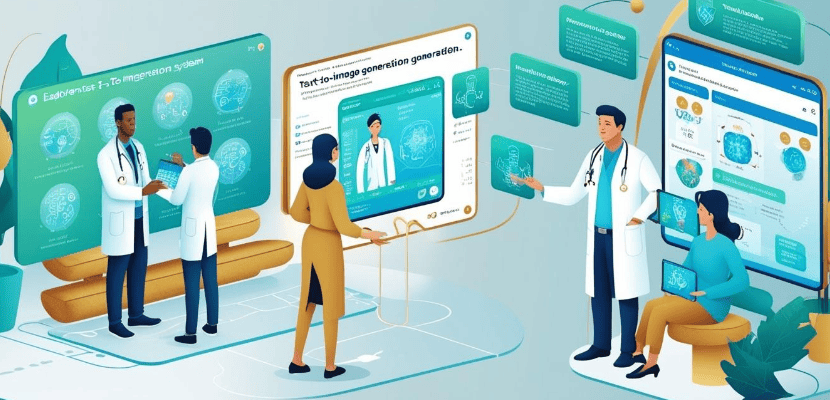
Open-Source Platforms Advancing Medical Imaging Innovations
Open-source platforms are pivotal in advancing medical imaging innovations, providing researchers with collaborative tools that enhance diagnostic capabilities. By granting access to source code, these platforms promote shared knowledge and rapid development, allowing teams to refine algorithms and imaging techniques. Popular platforms like 3D Slicer and ITK-SNAP enable customization for specific clinical needs, driving real-world innovation. The transparency of open-source software fosters trust and security, which are essential in healthcare. Consequently, these platforms accelerate technological advancements and deliver adaptable solutions in medical imaging.
The impact of open-source platforms is significant across medical imaging applications, from diagnostics to treatment planning. They support the development of sophisticated algorithms for image analysis, improving the accuracy of identifying abnormalities. Machine learning integration further enhances predictive analytics, aiding personalized treatment strategies. Additionally, these tools facilitate real-time collaboration among clinicians, essential for multidisciplinary care. As adoption grows, the potential for standardization in imaging practices increases, ultimately benefiting patient outcomes. This synergy between open-source innovation and healthcare is shaping the future of medical imaging.
Patient Engagement: Visual Tools for Better Understanding
Visual tools are essential in improving patient engagement by making complex medical information easier to understand. Diagrams, infographics, and interactive models help healthcare providers communicate diagnoses and treatment options effectively. By simplifying medical jargon, these aids empower patients to actively participate in their care decisions. This increased understanding leads to better adherence to treatment plans and enhanced health outcomes. Additionally, visual tools encourage collaboration between patients and providers, fostering open dialogue and trust.
These tools also accelerate medical discoveries by improving communication among researchers and clinicians. Visual representations of complex data help streamline the analysis and interpretation of clinical findings. Collaborative platforms utilizing visualization techniques can enhance research workflows and innovation in treatment development. Moreover, when patient-generated data is visualized, it offers valuable insights into treatment effectiveness. As visual tools advance, their impact on patient engagement and medical discoveries will continue to grow.
Future Trends: What’s Next for Text-to-Image Systems in Healthcare
The future of text-to-image technology in healthcare holds transformative potential, revolutionizing diagnostics, patient education, and medical training. With ongoing advancements in machine learning, these systems are increasingly capable of generating high-quality, contextually accurate images from detailed textual descriptions. This progress empowers healthcare professionals to visualize complex medical scenarios with greater precision. For instance, surgeons may soon create visual representations of anatomical structures based on surgical notes, enhancing preoperative planning and potentially improving surgical outcomes. Furthermore, integrating text-to-image systems with electronic health records (EHRs) could enable the automatic generation of educational materials specific to patient conditions, leading to improved understanding, engagement, and adherence to medical guidance.
In medical research and training, text-to-image systems promise impactful applications. Researchers can use them to produce illustrative images that convey study findings, making complex data more accessible to colleagues and the public. For medical trainees, the ability to visualize rare conditions or intricate cases will foster a deeper understanding and greater familiarity with diverse clinical presentations. As collaboration between developers, healthcare providers, and regulatory bodies strengthens, ethical frameworks will safeguard patient privacy while maximizing the utility of these tools. Altogether, text-to-image systems are poised to advance both patient care and medical education, bridging gaps in understanding and contributing to better healthcare outcomes.
AI-Enhanced Data Integration Solutions for AWS Supply Chain
AI Streamlines Data Integration in AWS Supply Chains
AI streamlines data integration in AWS supply chains by automating and optimizing data processing from various sources, such as suppliers, inventory systems, and logistics platforms. Leveraging AWS services like Amazon S3 for data storage and Amazon Kinesis for real-time data streaming, AI algorithms efficiently analyze, categorize, and clean vast datasets. AI-powered tools like Amazon SageMaker enable machine learning models to predict demand, track inventory, and optimize logistics, reducing human error and improving decision-making.
With AI, supply chain data is processed faster and more accurately, allowing businesses to respond to market fluctuations and customer needs in real time. AWS IoT services also integrate with AI to manage and monitor IoT devices across the supply chain, providing real-time visibility into operations. By automating data integration and leveraging predictive analytics, AI and AWS enable supply chains to be more responsive, agile, and efficient in today’s competitive landscape.
Real-Time Data Processing in Supply Chains
Real-time data processing in supply chains allows companies to instantly collect and analyze data from various sources, such as IoT devices and logistics systems. This enables quick adjustments and decision-making to improve operations, optimize inventory, and manage delivery schedules. By leveraging cloud platforms like AWS, businesses can continuously monitor supply chain activities and respond immediately to disruptions or changes.
The process works through IoT sensors embedded in vehicles or equipment, transmitting data to cloud services like AWS Lambda or Amazon Kinesis. AI and machine learning algorithms then analyze this data in real-time, allowing companies to detect potential issues and make proactive adjustments. This combination of real-time insights and rapid decision-making leads to greater efficiency, reduced delays, and enhanced overall performance.
Predictive Analytics in AWS Supply Chain Management
Predictive analytics in AWS supply chain management harnesses AI to forecast future outcomes from historical and real-time data. By analyzing data from inventory systems and customer demand, AI models can anticipate demand fluctuations, optimize inventory levels, and pinpoint potential disruptions in the supply chain.
With AWS services like Amazon SageMaker, businesses can create and deploy machine learning models that efficiently process large datasets. These models facilitate proactive decision-making, enabling companies to identify challenges in advance and make informed adjustments to enhance efficiency and reduce costs. By integrating AI-driven predictive analytics, organizations gain crucial insights into supply chain trends, leading to more accurate demand planning, improved resource allocation, and a more agile, resilient supply chain.

Challenges and AI Solutions in Supply Chain Management
Global Economic Uncertainty: Economic fluctuations, geopolitical tensions, and inflation create challenges for supply chains by causing unpredictable demand and rising costs. However, AI improves predictive analytics, enabling companies to forecast demand accurately and anticipate cost increases. This proactive strategy allows businesses to adapt quickly, maintain operational efficiency, and navigate market uncertainties with greater resilience.
Technological Integration: While integrating technologies like AI, IoT, and blockchain can be complex and costly, AI simplifies the process by providing smarter interfaces and automating data management. It reduces the burden of data collection and processing, allowing companies to focus on meaningful analysis. AI also eases employee resistance to change by improving system usability, making the adoption of new technologies smoother and more efficient.
Inventory Management Issues: AI significantly improves inventory management by enhancing demand forecasting through predictive analytics. It helps prevent stockouts and overstocking by analyzing data and market trends. AI-driven tools also recommend optimal stock levels based on real-time conditions, ensuring efficient and adaptive inventory management.
Cybersecurity Threats: As logistics systems digitize, the risk of cyber-attacks increases, posing ongoing challenges for data protection and operational security. AI enhances cybersecurity by deploying advanced threat detection systems that analyze network traffic and detect patterns indicating potential attacks. Additionally, AI automates incident response, improving security protocols and ensuring more efficient, comprehensive protection.
Supply Chain Disruptions: Natural disasters, pandemics, and political instability can disrupt supply chains, with COVID-19 revealing critical vulnerabilities. AI enhances risk assessment and management by predicting disruptions through real-time data analysis. Machine learning algorithms identify patterns signaling potential issues, allowing companies to take proactive measures and develop contingency plans, ultimately strengthening supply chain resilience.
Future Trends: The Evolving Landscape of AI in Supply Chains
AI can significantly enhance logistics and supply chain management related to goods and services by addressing common challenges. For instance, AI-driven predictive analytics can improve demand forecasting for various products and services amid global economic uncertainties, while automation technologies can alleviate labor shortages by handling repetitive tasks in warehouses and distribution centers, thus boosting overall efficiency. Additionally, AI can optimize transportation routes for the delivery of goods, reducing rising costs through efficient logistics planning.
In terms of supply chain disruptions affecting goods and services, AI enhances risk management by predicting potential issues through real-time data analysis, allowing companies to develop proactive contingency plans. Meanwhile, AI can elevate customer experiences by providing real-time tracking of deliveries, automating customer inquiries with chatbots, and personalizing services according to consumer preferences.
Furthermore, AI helps with regulatory compliance by monitoring changes affecting the transport of goods and services and identifying potential issues, while optimizing operations for sustainability through energy-efficient routing and waste reduction in packaging and distribution. In inventory management, AI-driven analytics allow for better demand forecasting, helping businesses navigate stock levels for both goods and services effectively. Overall, AI technologies streamline operations and improve resilience in logistics, addressing contemporary challenges effectively.
Empowering Retail Growth with Scalable Cloud Infrastructure
Consumer demands are rapidly changing, forcing retailers to adapt their supply chain, inventory management, and customer engagement strategies to remain competitive. As expectations shift, the importance of cloud infrastructure in driving retail growth becomes more pronounced. Cloud technology offers the scalability and agility needed to address fluctuating customer demands, particularly during peak seasons and promotional events. By leveraging cloud solutions, retailers can optimize operations and enhance the overall customer experience. This adaptability is essential for sustainable growth in a dynamic retail landscape.
In today’s digital-first environment, consumers expect convenience, personalization, and seamless experiences across both online and physical channels. Cloud infrastructure helps retailers meet these demands by centralizing data and streamlining processes by utilizing data analytics, artificial intelligence, and machine learning and gains valuable insights into consumer behavior and preferences. This knowledge allows for refined marketing strategies and optimized inventory management. Embracing cloud technology enables retailers to navigate the evolving retail sector with agility and efficiency, positioning them for long-term success.
Role of Cloud Infrastructure in Retail Transformation
Cloud infrastructure is transforming the retail industry by offering unparalleled scalability, especially during peak shopping seasons. Thanks to the elasticity of cloud computing, retailers can dynamically adjust computing resources to handle spikes in web traffic and transactions effortlessly. With features like cloud-based load balancing and content delivery networks (CDNs), retailers can optimize performance and minimize latency during high-demand periods. Additionally, autoscaling capabilities allow retailers to automatically scale resources, ensuring seamless operations during peak times and enhancing the customer experience.
Moreover, cloud infrastructure provides robust data management solutions essential for modern retail. Retailers can securely store and analyze vast amounts of customer data, sales transactions, and inventory details, gaining key insights into consumer behavior, preferences, and market trends. This data-driven approach enables personalized marketing strategies and optimized product offerings, driving customer loyalty and business growth. By leveraging cloud-based data management, retailers can run targeted campaigns, predict demand, and improve the customer experience across multiple channels, strengthening their competitive edge in the retail market.
Meeting Growing Retail Demands Seamlessly
Scalable cloud solutions are essential for retailers to manage fluctuating customer demands, especially during peak seasons. With cloud infrastructure, retailers can dynamically adjust their operations to handle varying levels of demand, ensuring consistent performance and high customer satisfaction during high-traffic periods. Cloud-based load balancing and content delivery networks (CDNs) allow retailers to efficiently manage web traffic, reduce latency, and enhance the shopping experience.
Additionally, cloud technology empowers retailers to leverage advanced data management and analytics for informed decision-making based on market trends and consumer behavior. By securely storing and analyzing large volumes of customer data, retailers can refine marketing strategies, predict demand, and optimize product offerings to align with changing customer preferences. Cloud-based solutions seamlessly integrate big data and analytics, enabling targeted campaigns and enhancing the customer experience across multiple channels, demonstrating the agility and customer-centric approach necessary to meet the evolving demands of the retail industry.
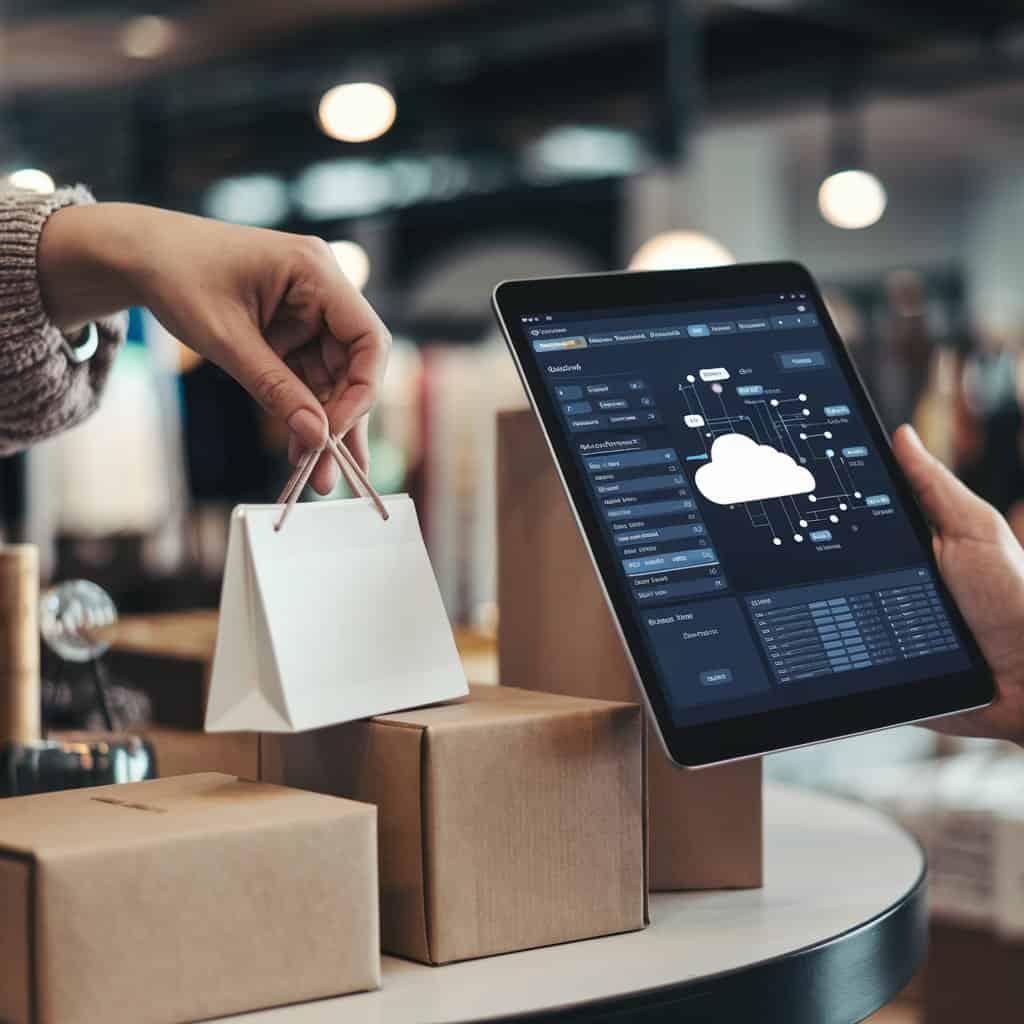
Maximizing Retail Efficiency with Cloud Infrastructure
Heightened data security: Cloud infrastructure provides robust data security measures, including encryption, access controls, and regular backups, safeguarding sensitive customer information and business data from potential threats.
Enhanced user experience: By leveraging cloud technology, retailers can deliver seamless and personalized experiences across multiple touchpoints, ensuring a cohesive and responsive interaction with customers, and ultimately fostering brand loyalty.
Improved inventory management: Cloud-based inventory systems enable real-time tracking, demand forecasting, and automated replenishment, optimizing stock levels, reducing holding costs, and minimizing stockouts, thereby improving operational efficiency.
Effective disaster management: Cloud infrastructure offers data redundancy, off-site backups, and disaster recovery capabilities, ensuring minimal disruptions and swift recovery in the event of unforeseen incidents such as system failures or natural disasters.
Increased profitability: The agility and scalability of cloud solutions support cost-efficient operations, enabling retailers to respond swiftly to market demands, reduce infrastructure costs, and allocate resources effectively, ultimately contributing to increased profitability and sustainability.
Cloud Shapes Future Retail Growth Landscape
In the future, cloud technology is set to revolutionize retail, driving efficiency and personalized experiences. Retailers will increasingly rely on cloud-based solutions for real-time data analytics and operational agility across digital and physical channels. The integration of AI, machine learning, and IoT with cloud computing will enhance engagement and enable retailers to adapt to changing market dynamics.
Cloud technology’s future in retail growth also promises improved resilience and adaptability, empowering retailers to swiftly respond to market shifts and disruptions. This flexibility will enable retailers to thrive in a competitive digital landscape by enhancing operational agility and driving growth through data-driven strategies.
AI-Driven Data Analytics: Transforming Politics and Securing Elections
Artificial intelligence is transforming the political landscape, driving more sophisticated campaigns and enhancing election security. With the capabilities of AI-driven data analytics, political teams can now sift through massive datasets to identify trends, understand voter behavior, and create targeted messaging that truly resonates with voters. This ability to adapt in real-time ensures that campaigns remain relevant and impactful, tailoring their approaches to the ever-changing political environment.
Beyond shaping campaign strategies, AI also plays a crucial role in safeguarding election integrity. By detecting anomalies in voter data and identifying potential fraud, AI helps maintain the transparency and security of the electoral process. As concerns about election security and transparency continue to grow, AI becomes an indispensable tool in protecting the democratic process and ensuring fair and credible elections.
AI-Enhanced Voter Behavior Insights: Data-Driven Political Decisions
Imagine a world where political messages seem to speak directly to interests and concerns—that’s the transformative power of AI-driven analytics in action. Voters are experiencing a new level of engagement and relevance in political content, thanks to advanced AI tools like Crimson Hexagon and PoliMonitor that analyze vast datasets, including voting history, social media activity, and demographic information. These AI systems offer campaigns deep insights into voter preferences, enabling them to craft highly personalized messages that resonate on an individual level.
This tailored approach means that voters receive content that truly addresses their specific needs and concerns, rather than generic, one-size-fits-all messaging. Additionally, AI’s ability to predict and track changes in voter sentiment in real-time allows campaigns to adjust their strategies dynamically. This responsiveness ensures that political communication remains timely and effective, adapting to shifting attitudes and emerging issues. As AI technology continues to advance, its impact on political messaging is set to deepen, making interactions with campaigns more relevant and engaging, and ensuring that voters are better informed and more connected to the issues that matter most to them.
Detecting and Preventing Election Fraud with AI Algorithms
AI algorithms are revolutionizing the way election fraud is detected, ensuring greater transparency in democratic processes. By analyzing large datasets, AI can swiftly identify irregularities such as duplicate registrations and unusual voting patterns, significantly reducing the potential for human error. Governments are increasingly adopting these technologies to safeguard election integrity, making AI an essential tool in fraud prevention.
Moreover, AI goes beyond mere detection by utilizing predictive analytics to anticipate potential risks and monitoring social media to combat misinformation. As elections become more digitized, AI’s role in maintaining security and fairness is becoming increasingly critical. This underscores the importance of AI for government agencies tasked with election security, as it helps protect against cyber threats and ensures the integrity of election data and processes.
Predictive Analytics: Shaping Campaign Strategies and Election Outcomes
Predictive analytics is transforming campaign strategies and election outcomes by harnessing AI to analyze voter data and trends. By examining information from social media, voting history, and demographics, AI enables campaigns to forecast voter behavior with remarkable accuracy. This capability allows political teams to craft highly targeted messages and strategies tailored to specific voter segments, optimizing their outreach and engagement efforts.
Additionally, AI-powered predictive analytics enhances campaign efficiency by facilitating real-time adjustments. It helps campaigns anticipate shifts in voter sentiment and opponent strategies, enabling better resource allocation and more effective voter engagement. As AI technology continues to advance, its influence on shaping election strategies and outcomes is expected to grow, offering deeper insights and more precise tools for both political analysts and campaign teams.
Social Media Sentiment Analysis: AI’s Role in Political Messaging
AI-driven social media sentiment analysis is transforming political analysis by offering deep insights into voter behavior and election trends. For political analysts, AI tools provide real-time data on public sentiment, enabling more accurate predictions and strategic advice. This enhanced analysis helps campaigns refine their messaging and engage more effectively with voters.
For voters, AI ensures that political content is relevant and engaging, improving the quality of information and interaction. Additionally, government agencies use AI to protect election integrity and combat cyber threats, making elections more secure. As AI technology advances, its impact on political messaging and election security continues to grow.
AI in Election Auditing: Enhancing Transparency and Security
AI in Election Auditing is revolutionizing the way election committees ensure transparency and security. By utilizing advanced AI tools, these committees can efficiently monitor and audit election processes, quickly identifying irregularities and potential fraud. This technology enhances transparency by detecting discrepancies and maintaining trust in the electoral system.
Political analysts also gain from AI, using it to delve deeper into voter behavior, election trends, and public sentiment. AI provides critical insights that improve predictions and strategic advice, leading to more informed and effective election strategies. As AI continues to advance, its impact on both auditing and analyzing elections is becoming increasingly vital for ensuring a secure and transparent democratic process.
Ethical Challenges and the Future of AI in Politics and Election Security
As AI advances in politics and election security, it presents both significant benefits and ethical dilemmas. While AI enhances voter targeting, sentiment analysis, and election integrity, it also raises concerns about privacy, data manipulation, and misuse. These issues underscore the need for strict ethical guidelines to protect voter information and ensure fair practices.
The future of AI in politics will depend on addressing these ethical challenges while leveraging its potential. Ensuring transparency, data protection, and clear regulations will be key to maintaining trust and fairness in elections. Balancing innovation with ethical considerations is essential for upholding democratic values as AI technologies continue to evolve.
Hybrid Cloud Revolution: A Modern IT Infrastructure Solution
Hybrid cloud combines on-premises infrastructure with public cloud services, like AWS, to create a flexible, scalable IT environment. It allows businesses to run workloads locally and in the cloud, optimizing performance, security, and compliance. This architecture offers the agility to manage data where it’s most efficient, balancing the benefits of cloud innovation with the control of in-house systems.
With AWS hybrid cloud solutions such as AWS Outposts and AWS Direct Connect, businesses can seamlessly integrate their existing infrastructure with the cloud. This enables efficient scaling, low-latency connections, and adherence to regulatory standards, providing the best of both on-premises and cloud environments.
Why do businesses implement a hybrid cloud?
Businesses adopt hybrid cloud solutions to integrate their on-premises infrastructure with cloud services like AWS, enhancing control and flexibility. This approach allows for smoother migration and modernization by combining existing IT systems with AWS’s scalability and cost-efficiency. Companies can keep sensitive workloads on-premises while utilizing AWS for its powerful tools and resources, which help meet low-latency needs, process data locally, and comply with regulations.
AWS plays a crucial role in hybrid cloud strategies by offering scalable resources that can adjust to varying demands, reducing hardware investments and operational costs. Additionally, hybrid cloud setups ensure business continuity by enabling workload shifts between on-premises and cloud environments, minimizing disruptions during maintenance or failures. This blend of local and cloud resources helps businesses maintain a resilient and adaptable IT infrastructure.
Key Benefits of Hybrid Cloud for Modern Businesses
Hybrid cloud infrastructure provides modern businesses with a powerful blend of on-premises and cloud solutions, leveraging the best of both worlds to enhance operational efficiency and flexibility. One of the primary advantages of a hybrid cloud is increased scalability. By integrating AWS cloud services with existing on-premises resources, companies can dynamically scale their compute and storage capabilities based on demand. This elasticity ensures that businesses can handle varying workloads efficiently without over-provisioning resources, thereby optimizing costs and performance.
Another significant benefit is improved agility in development and deployment. With a hybrid cloud setup, businesses can leverage AWS’s extensive suite of services to accelerate application development, testing, and deployment. This approach allows for rapid experimentation and innovation, as developers can utilize AWS’s scalable infrastructure to test new ideas and roll out solutions faster than traditional setups. The ability to seamlessly integrate and manage these services across environments further supports continuous integration and delivery practices.
Hybrid cloud solutions also bolster business continuity and resilience. In scenarios where on-premises systems are undergoing maintenance or facing issues, AWS’s public cloud can take over, ensuring minimal disruption to operations. This capability is crucial for maintaining high availability and reducing downtime, which directly impacts customer satisfaction and operational efficiency.
Lastly, hybrid cloud environments enhance compliance and data security. By using AWS’s secure cloud services in conjunction with local data centers, businesses can ensure that sensitive data is stored and managed according to regulatory requirements. This hybrid approach provides greater control over data residency and security policies, helping businesses meet stringent compliance standards while taking advantage of cloud innovation.

Hybrid Cloud with AWS: A Strategic Approach to Modern IT Infrastructure
In today’s rapidly evolving digital landscape, many organizations are turning to hybrid cloud solutions to achieve greater flexibility and scalability. AWS, with its comprehensive suite of cloud services, stands out as a leader in this space. The hybrid cloud strategy offered by AWS allows businesses to seamlessly integrate on-premises infrastructure with AWS’s robust cloud environment. This approach enables organizations to leverage the scalability and cost-efficiency of AWS while maintaining control over sensitive data and legacy systems on-premises. Key AWS services like AWS Direct Connect and AWS Storage Gateway facilitate this seamless integration, ensuring a smooth and secure connection between local data centers and the cloud.
AWS’s hybrid cloud strategy is designed to address the diverse needs of businesses looking to optimize their IT operations. By utilizing services such as Amazon EC2, which provides scalable compute capacity, and Amazon S3, which offers secure and scalable storage, companies can build a hybrid environment that supports a wide range of applications and workloads. This strategic blend of on-premises and cloud resources allows organizations to achieve enhanced performance, agility, and cost-effectiveness. As businesses continue to navigate the complexities of modern IT infrastructure, AWS’s hybrid cloud solutions offer a compelling path forward, combining the best of both worlds to drive innovation and operational excellence.
Building a Hybrid Cloud Strategy for Future Growth
In today’s rapidly evolving technological landscape, adopting a hybrid cloud strategy is becoming increasingly crucial for businesses aiming to scale and innovate. A hybrid cloud environment, which integrates both on-premises infrastructure and public cloud services, offers unparalleled flexibility and agility. By leveraging platforms like AWS, organizations can seamlessly manage workloads across different environments, ensuring optimal performance and cost-efficiency. AWS’s extensive suite of cloud services, including AWS Lambda and Amazon EC2, provides businesses with the tools they need to dynamically allocate resources and adapt to changing demands.
Implementing a hybrid cloud strategy with AWS not only enhances operational efficiency but also fortifies data security and compliance. AWS’s robust security features, such as AWS Shield and AWS Key Management Service (KMS), ensure that sensitive information is safeguarded across both on-premises and cloud environments. Furthermore, the integration of AWS’s cloud-native tools with existing on-premises infrastructure enables organizations to harness the full potential of cloud computing while maintaining control over their data and applications. This strategic approach to cloud adoption empowers businesses to future-proof their IT infrastructure, drive innovation, and support sustained growth in an increasingly competitive market.
Being an AWS Select Partner offers a range of advantages for organizations focusing on hybrid cloud solutions. This partnership provides exclusive access to advanced training and technical support, ensuring that partners are well-equipped to implement and optimize AWS hybrid cloud strategies. AWS Select Partners also benefit from the AWS Partner Network (APN) Portal, which includes specialized tools and resources to enhance their hybrid cloud offerings. Moreover, the partnership opens doors to co-marketing opportunities and collaborative go-to-market initiatives, empowering partners to showcase their expertise and expand their reach in delivering innovative hybrid cloud solutions with AWS.
Fashion Forward: The Generative AI Revolution in E-commerce Retail
As the e-commerce industry evolves, retailers face new challenges and opportunities, making it crucial to integrate Generative AI into their business strategies. This transformative technology is revolutionizing both front-end customer interactions and back-end processes, from personalized search suggestions and AI-generated collections to localized product content. By embracing Generative AI, brands can offer highly personalized shopping experiences, enhance customer engagement, and drive innovation, ensuring they stay competitive in a rapidly changing market. In this blog, we delve into the profound impact of Generative AI on e-commerce, exploring its role in personalized shopping, virtual try-ons, predictive fashion trends, and the future of AI-powered business models.
Personalized Shopping Experiences: AI in eCommerce
Personalization has become the cornerstone of modern eCommerce, and AI is at the forefront of delivering this tailored shopping experience. Generative AI analyzes vast amounts of customer data, including browsing history, past purchases, and even social media behavior, to create individualized recommendations. These personalized suggestions ensure that customers are presented with products that align with their preferences, increasing the likelihood of a purchase.
Beyond product recommendations, AI is enhancing the overall shopping journey. AI-driven chatbots provide real-time assistance, answering customer queries and guiding them through the buying process. These virtual assistants are not just reactive; they proactively suggest products, offer discounts and provide personalized content based on the customer’s behavior. This level of customization not only improves the customer experience but also fosters brand loyalty, as shoppers feel that the brand understands and caters to their unique needs.
Moreover, visual search capabilities powered by AI allow customers to upload images and find similar products, revolutionizing the way people discover new items. This feature is particularly valuable in the fashion industry, where style and aesthetics play a crucial role in purchase decisions. By leveraging AI, eCommerce platforms are creating a more intuitive, engaging, and personalized shopping experience that resonates with today’s consumers.
Virtual Try-Ons: Redefining Customer Engagement
One of the most significant challenges in online fashion retail is the inability for customers to physically try on products before making a purchase. Generative AI is addressing this issue through virtual try-ons, a technology that allows customers to see how clothes, accessories, or makeup would look on them without leaving their homes.
Virtual try-ons use AI to analyze a customer’s body shape, skin tone, and facial features, creating a realistic representation of how products will fit and appear. This technology not only enhances customer confidence in their purchase decisions but also reduces return rates, as customers are more likely to choose items that suit them well.
For example, AI-powered virtual fitting rooms enable shoppers to mix and match outfits, experiment with different styles, and see the results in real time. This interactive experience bridges the gap between online and in-store shopping, offering the convenience of eCommerce with the assurance of a fitting room experience. By redefining customer engagement through virtual try-ons, AI is helping retailers create a more immersive and satisfying shopping experience.
Predictive Fashion Trends: How AI is Shaping the Future
The fashion industry is notoriously fast-paced, with trends emerging and fading at a rapid pace. Generative AI is playing a pivotal role in predicting these trends, enabling retailers to stay ahead of the curve. By analyzing data from various sources, including social media, fashion shows, and consumer behavior, AI can identify emerging trends before they become mainstream.
This predictive capability allows retailers to optimize their inventory, ensuring they stock the right products at the right time. For instance, AI can forecast the popularity of certain styles, colors, or materials, enabling brands to respond quickly to changing consumer preferences. This agility is crucial in the fashion industry, where timing is everything.
Moreover, AI can help designers and brands experiment with new ideas, generating innovative designs based on current trends. These AI-generated designs can inspire fashion lines, allowing brands to create unique collections that resonate with consumers. By leveraging AI’s predictive power, retailers can not only keep up with the latest trends but also set new ones, establishing themselves as industry leaders.
How AI is Revolutionizing the Retail Industry
The impact of AI on the retail industry extends beyond eCommerce and fashion. Across the entire retail landscape, AI is driving innovation, efficiency, and customer satisfaction. From supply chain optimization to in-store experiences, AI is revolutionizing how retailers operate and interact with customers.
In supply chain management, AI is improving efficiency by predicting demand, optimizing inventory levels, and reducing waste. Machine learning algorithms analyze sales data, seasonal trends, and external factors such as economic conditions to forecast demand accurately. This enables retailers to manage their inventory more effectively, ensuring that popular products are always in stock while minimizing excess inventory.
In physical stores, AI is enhancing the shopping experience through technologies such as smart mirrors, automated checkout systems, and personalized promotions. Smart mirrors, for instance, allow customers to try on clothes virtually, offering styling suggestions based on their preferences. Automated checkout systems use AI to streamline the payment process, reducing wait times and improving customer satisfaction.
Moreover, AI-driven personalization extends to in-store promotions, where customers receive tailored offers based on their purchase history and behavior. This level of customization ensures that promotions are relevant, increasing the likelihood of a sale and improving the overall shopping experience.
The Future of Retail: AI-Powered Business Models
As AI continues to evolve, it is paving the way for new business models in the retail industry. AI-powered platforms are enabling retailers to offer highly customized products and services, catering to the specific needs and preferences of individual customers.
One emerging business model is the concept of hyper-personalization, where AI tailors every aspect of the shopping experience to the individual customer. This goes beyond product recommendations and extends to personalized pricing, marketing, and even product design. By leveraging AI, retailers can create unique experiences for each customer, differentiating themselves in a competitive market.
Another promising development is the rise of AI-driven marketplaces, where algorithms match customers with products and services that best meet their needs. These platforms use AI to analyze customer data, predict preferences, and curate personalized shopping experiences. This not only enhances customer satisfaction but also allows smaller brands to reach their target audience more effectively.
Generative AI is transforming the e-commerce retail industry by seamlessly integrating online and offline experiences, ensuring customers receive personalized and consistent interactions across all channels. By tracking online behavior, AI tailors in-store experiences with customized recommendations and promotions, enhancing customer engagement and satisfaction. As AI continues to advance, it is not only driving innovation in personalized shopping and virtual try-ons but also predicting fashion trends and unlocking new business models. Retailers who embrace this technology will be at the forefront of a fashion-forward, customer-centric future in commerce.
Supercharging AWS Cloud Operations: A Journey from Docker to Kubernetes
Understanding the Docker-Kubernetes-AWS Ecosystem
The Docker-Kubernetes-AWS ecosystem forms a robust foundation for modern cloud operations. Docker streamlines the packaging and deployment of applications by containerizing them, ensuring consistent environments across different stages of development. Kubernetes, an orchestration tool, takes this a step further by automating the deployment, scaling, and management of these containers, providing resilience and high availability through features like self-healing and load balancing.
Integrating this with AWS amplifies the ecosystem’s capabilities. AWS offers scalable infrastructure and managed services that complement Kubernetes’ automation, like Amazon EKS (Elastic Kubernetes Service), which simplifies Kubernetes deployment and management. This trio enables organizations to build, deploy, and manage applications more efficiently, leveraging Docker’s portability, Kubernetes’ orchestration, and AWS’s extensive cloud infrastructure. Together, they create a seamless, scalable, and resilient environment that is crucial for cloud-native applications.
Why is Kubernetes the Next Step After Docker on AWS?
After mastering Docker on AWS, Kubernetes emerged as the natural progression for scaling containerized applications. While Docker simplifies container management, Kubernetes takes it further by orchestrating these containers at scale, providing advanced features like automated scaling, self-healing, and seamless rollouts. This level of automation is essential for handling complex workloads in a dynamic cloud environment like AWS, where demands can shift rapidly.
Kubernetes also offers a significant advantage over Docker Swarm in terms of flexibility and resilience. With Kubernetes, you can deploy multi-region, multi-cloud applications effortlessly, ensuring high availability and fault tolerance. Its robust ecosystem, including Helm for package management and integrated CI/CD pipelines, streamlines cloud operations, reducing manual interventions and minimizing downtime. In an AWS environment, Kubernetes leverages services like Amazon EKS, enabling you to manage clusters with AWS-native tools, which enhances security, compliance, and cost efficiency.
In summary, Kubernetes on AWS empowers cloud operations teams with unparalleled control, scalability, and efficiency, making it the logical next step after Docker for enterprises aiming to optimize their cloud-native architectures.
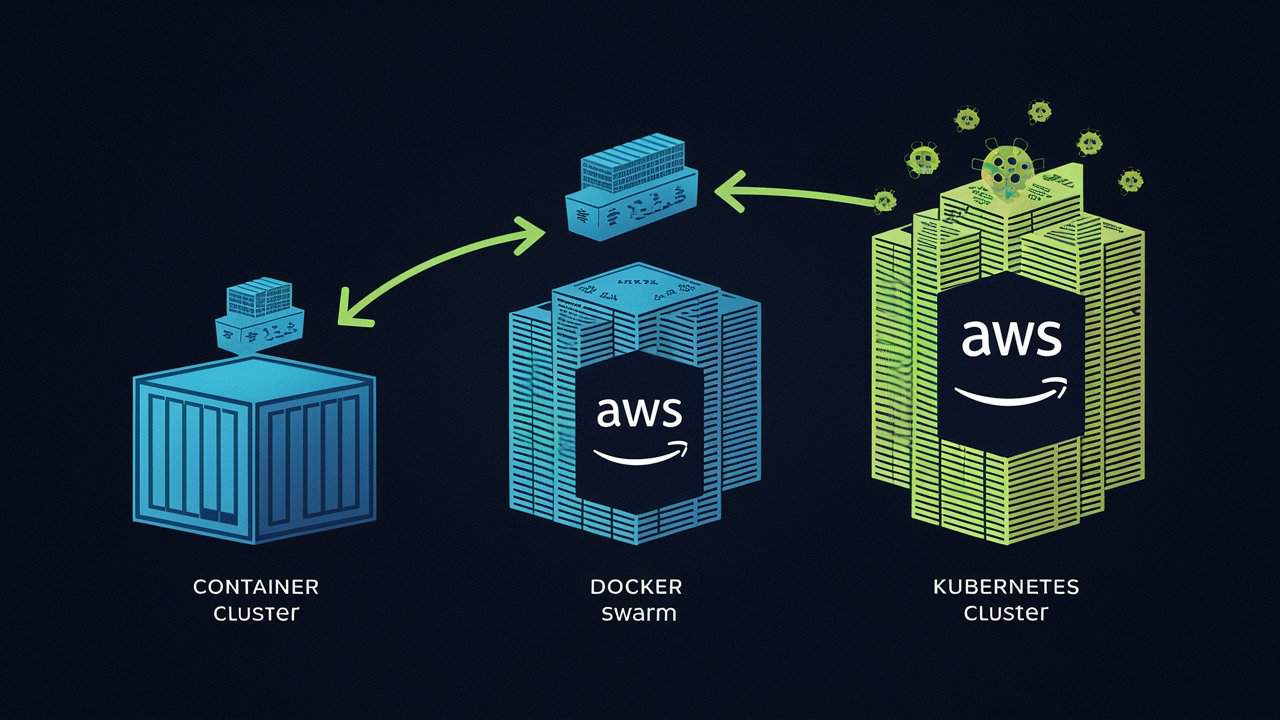
Container Orchestration Simplified: How Kubernetes Enhances Docker Workloads
Container orchestration is pivotal for scaling and managing containerized applications, especially in cloud environments. Kubernetes, an open-source platform, simplifies this by automating the deployment, scaling, and management of Docker containers. It acts as a robust control plane, ensuring that containerized applications run seamlessly across clusters, regardless of underlying infrastructure.
In cloud operations, Kubernetes enhances Docker workloads by providing resilience, scalability, and efficient resource utilization. It automatically handles load balancing, self-healing, and rolling updates, ensuring minimal downtime and consistent application performance. By abstracting the complexity of managing multiple containers, Kubernetes allows cloud teams to focus on application development rather than infrastructure management.
Moreover, Kubernetes integrates smoothly with cloud services like AWS, GCP, and Azure, offering built-in tools for monitoring, logging, and security. This integration ensures that cloud-native applications can scale effortlessly, adapt to changing demands, and maintain high availability, making Kubernetes an indispensable tool for modern cloud operations.
Efficient Application Scaling for Cloud Developers with Docker, Kubernetes, and AWS
Efficient application scaling is vital for cloud developers, and integrating Docker, Kubernetes, and AWS offers a robust solution. Docker streamlines application deployment by encapsulating it in lightweight containers, ensuring consistent performance across different environments. These containers can be easily scaled up or down based on real-time demand, simplifying the management of varying workloads.
Kubernetes enhances this process by orchestrating these containers at scale. As an open-source platform, Kubernetes automates deployment, scaling, and operational management of containerized applications, allowing developers to concentrate on development rather than infrastructure. When paired with AWS, Kubernetes benefits from the cloud provider’s comprehensive ecosystem, including Elastic Kubernetes Service (EKS), which facilitates seamless cluster management.
AWS further supports scalable cloud operations with Auto Scaling and Elastic Load Balancing. These services automatically adjust resources to match traffic fluctuations, maintaining application responsiveness and optimizing cost efficiency. Together, Docker, Kubernetes, and AWS provide a cohesive framework for efficient, scalable cloud management.
Streamlined CI/CD Pipelines: Leveraging Kubernetes in Your Docker-Based AWS Environment
Streamlined CI/CD pipelines are essential for optimizing cloud operations, particularly when integrating Kubernetes with Docker in an AWS environment. Kubernetes automates the deployment, scaling, and management of Docker containers, making it easier to manage complex applications. This orchestration simplifies updates, enhances rollback capabilities, and minimizes downtime, ultimately boosting operational efficiency.
In AWS, combining Kubernetes with Docker leverages the full power of scalable, resilient infrastructure. Services like Amazon EKS (Elastic Kubernetes Service) manage Kubernetes clusters, allowing you to focus on application development rather than infrastructure maintenance. This integration fosters a more agile development process, accelerating time-to-market while ensuring high availability and performance. By aligning your CI/CD practices with these technologies, you achieve a more efficient and reliable cloud operation, meeting the demands of modern software delivery.
Optimizing Docker Swarm and Kubernetes on AWS: Key Takeaways
Optimizing Docker Swarm and Kubernetes on AWS can significantly enhance cloud operations, leading to more efficient resource utilization and streamlined deployments. Docker Swarm’s simplicity is a strong advantage for managing containerized applications. Leveraging AWS features such as Elastic Load Balancing (ELB) and Auto Scaling with Docker Swarm can ensure high availability and dynamic scaling. Utilizing AWS Fargate with Docker Swarm can further optimize operations by removing the need for managing underlying infrastructure, thereby reducing overhead and simplifying management.
On the other hand, Kubernetes provides more advanced orchestration capabilities and is ideal for complex, microservices-based applications. AWS EKS (Elastic Kubernetes Service) integrates seamlessly with Kubernetes, offering managed control plane operations, which simplifies cluster management and scales effortlessly with demand. To optimize Kubernetes on AWS, leverage AWS CloudWatch for monitoring and AWS IAM for fine-grained security controls. Combining Kubernetes’ robust orchestration with AWS’s scalable infrastructure ensures resilient, cost-effective, and highly available cloud operations.
Precision and Progress: Advancing Manufacturing with Generative AI
The manufacturing industry has evolved from manual craftsmanship in ancient times to the mechanized production of the Industrial Revolution, and further to the automation era of the 20th century. Despite these advancements, the industry has long faced complaints about inefficiencies, waste, high costs, and inconsistent quality. Workers also raised concerns about unsafe conditions and job displacement due to automation. The constant pursuit of innovation has driven the industry to seek solutions, culminating in today’s adoption of advanced technologies like AI.
Today, Generative AI is at the forefront of this evolution, bringing transformative changes to the industry. By leveraging algorithms that can generate designs, optimize processes, and predict outcomes, generative AI is revolutionizing how products are conceived and produced. In manufacturing, it enables the creation of complex, innovative designs that were previously impossible, while also streamlining production workflows. From reducing material waste to enhancing product quality, generative AI is not just a tool but a game-changer, driving the next wave of innovation and competitiveness in the manufacturing sector. The future of manufacturing is being shaped by these intelligent, adaptive technologies.
Enhancing Design Accuracy with AI-Driven Modeling
AI-driven modeling is revolutionizing design accuracy in the manufacturing industry, setting new standards that surpass traditional methods. Conventional design processes often involve extensive trial and error, which can be time-consuming and costly. In contrast, generative AI algorithms analyze vast datasets to create precise models, optimizing for factors such as material efficiency, durability, and cost. These algorithms can simulate thousands of design variations, ensuring that the final product is not only innovative but also meets exact specifications. This high level of precision reduces errors and minimizes the need for costly revisions, resulting in products that perform reliably in real-world conditions.
Moreover, AI-driven modeling enables rapid prototyping and testing, significantly speeding up the design process. Engineers can quickly visualize complex designs, make real-time adjustments, and refine models based on immediate feedback. This iterative process allows for faster development cycles, enabling manufacturers to bring products to market more quickly. Additionally, the ability to explore a wider range of design possibilities encourages innovation, allowing manufacturers to create cutting-edge products that were once thought to be unachievable. By enhancing accuracy, reducing costs, and fostering creativity, AI-driven modeling is transforming the landscape of manufacturing design, making it more efficient and effective than ever before.
Streamlining Production Processes with Predictive Analytics
Streamlining production processes through predictive analytics represents a major leap in manufacturing efficiency. By harnessing data from various sources—such as real-time sensors, historical production records, and sophisticated machine learning algorithms—predictive analytics allows manufacturers to anticipate potential disruptions before they occur. This proactive approach means that maintenance can be performed before equipment failures happen, reducing unplanned downtime and ensuring smooth operations. As a result, overall production efficiency is significantly enhanced, with fewer interruptions and more consistent output.
In addition to optimizing maintenance, predictive analytics plays a crucial role in refining supply chain management. By delivering precise demand forecasts, it enables manufacturers to accurately align inventory levels with anticipated needs. This foresight helps in adjusting production schedules and managing stock more effectively, minimizing the risks of both overstocking and shortages. Consequently, manufacturers benefit from a more responsive and flexible production system that not only reduces costs but also boosts customer satisfaction. Embracing predictive analytics allows manufacturers to improve operational efficiency, cut waste, and maintain a competitive edge in a rapidly evolving industry.
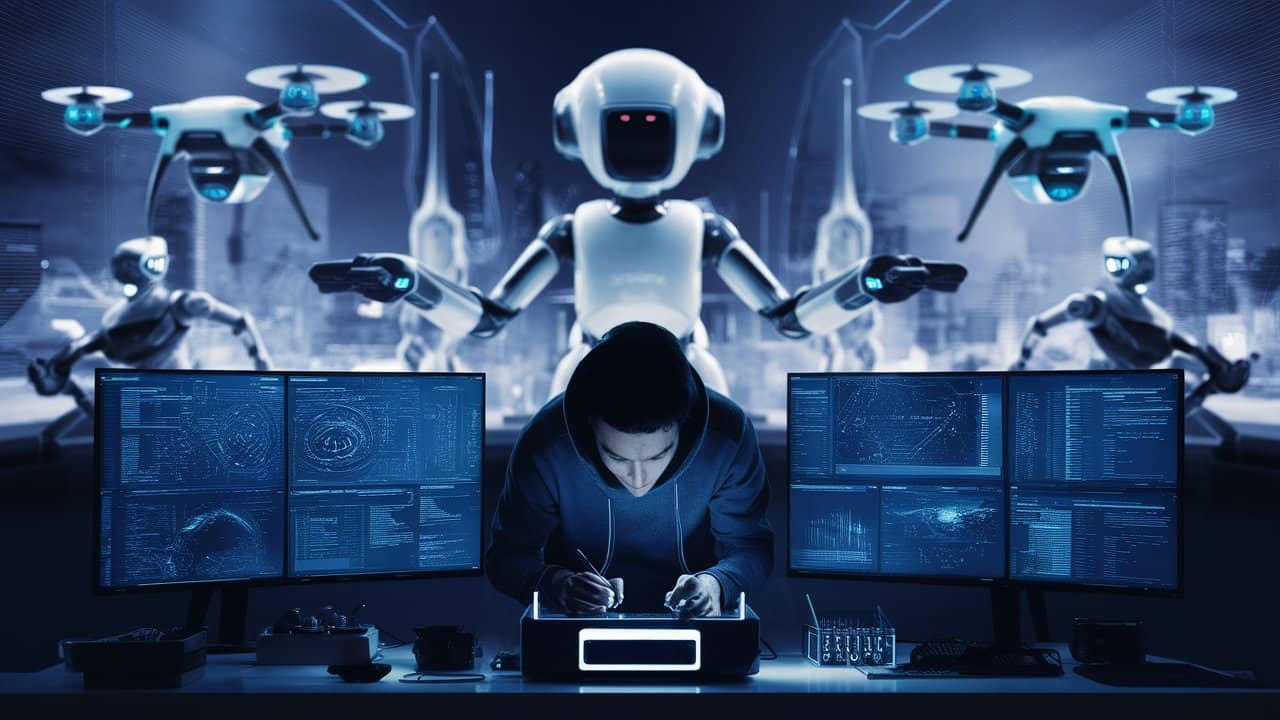
Quality Control Redefined: AI Inspection and Optimization
Quality control has always been a critical aspect of manufacturing, but traditional methods often struggle with inconsistencies and inefficiencies. The introduction of AI inspection and optimization represents a paradigm shift in how quality is maintained. AI-powered systems utilize advanced machine learning algorithms to inspect products with unprecedented accuracy. By analyzing images and sensor data, these systems can detect defects, deviations, and anomalies that might elude human inspectors. This not only enhances the precision of quality checks but also speeds up the inspection process, reducing the likelihood of costly recalls and ensuring higher standards of product excellence.
Moreover, AI-driven quality control systems can continuously learn and adapt over time. As they process more data, they refine their algorithms to improve detection capabilities and predict potential issues before they arise. This proactive approach enables manufacturers to address problems at their source, preventing defects from reaching the final stages of production. By integrating AI with existing quality control processes, companies can achieve a level of consistency and reliability that was previously unattainable.
The benefits of AI in quality control extend beyond mere detection. Optimization algorithms can analyze production data to identify trends and patterns that might indicate underlying issues. This data-driven insight allows manufacturers to fine-tune their processes, enhance operational efficiency, and minimize waste. As AI continues to evolve, its role in redefining quality control promises to drive innovation and set new benchmarks for excellence in manufacturing.
Benefits of AI in Manufacturing
Cost Reduction
The integration of AI into manufacturing processes heralds a new era of efficiency and cost-effectiveness. One of the most compelling advantages is cost reduction. Leveraging AI for predictive maintenance, optimizing resource allocation, and employing generative design techniques enables manufacturers to achieve substantial savings. Predictive maintenance algorithms, for instance, preemptively identify equipment issues, which minimizes downtime and costly repairs. Additionally, AI-driven resource optimization ensures that materials and energy are used efficiently, further cutting operational expenses.
Improved Product Quality
Another pivotal benefit is improved product quality. AI-powered quality control systems set a new standard for precision and consistency in manufacturing. These advanced systems detect even the slightest deviations or defects, ensuring that each product meets rigorous quality standards. By reducing human error and variability, AI enhances overall product reliability and customer satisfaction. Manufacturers can confidently deliver products that not only meet but exceed customer expectations, thereby bolstering their reputation in competitive markets.
Increased Productivity
Furthermore, AI enhances productivity through smart automation and streamlined processes. Automated systems powered by AI algorithms handle complex tasks with speed and accuracy, resulting in increased production output without compromising quality. By optimizing workflows and eliminating bottlenecks, manufacturers achieve higher throughput rates and quicker turnaround times. This not only boosts operational efficiency but also allows businesses to meet growing demand effectively. In essence, AI transforms manufacturing into a more agile and responsive industry, capable of adapting swiftly to market dynamics while maintaining high standards of productivity and quality.
Best Practices and Trends in Machine Learning for Product Engineering
Understanding the Intersection of Machine Learning and Product Engineering
Machine learning (ML) and product engineering are converging in transformative ways, revolutionizing traditional methodologies. At the intersection of these fields, AI-driven machine learning is automating complex tasks, optimizing processes, and enhancing decision-making. Product engineering, once heavily reliant on manual analysis and design, now leverages ML algorithms to predict outcomes, identify patterns, and improve efficiency. This synergy enables engineers to create more innovative, reliable, and cost-effective products.
For example, in the automotive industry, ML is utilized to enhance the engineering of self-driving cars. Traditional product engineering methods struggled with the vast array of data from sensors and cameras. By integrating machine learning, engineers can now process this data in real-time, allowing the vehicle to make split-second decisions. This not only improves the safety and functionality of self-driving cars but also accelerates development cycles, ensuring that advancements reach the market faster.
Current Trends in AI Applications for Product Development
1. Ethical AI:
Ethical AI focuses on ensuring that artificial intelligence systems operate within moral and legal boundaries. As AI becomes more integrated into product development, it’s crucial to address issues related to bias, fairness, and transparency. Ethical AI aims to create systems that respect user privacy, provide equal treatment, and are accountable for their decisions. Implementing ethical guidelines helps in building trust with users and mitigating risks associated with unintended consequences of AI technologies.
2. Conversational AI:
Conversational AI utilizes natural language processing (NLP) and machine learning to enable machines to comprehend and interact with human language naturally. This technology underpins chatbots and virtual assistants, facilitating real-time, context-aware responses. In product development, conversational AI enhances customer support, optimizes user interactions, and delivers personalized recommendations, resulting in more engaging and intuitive user experiences.
3. Evolving AI Regulation:
Evolving AI regulations are shaping product development by establishing standards for the responsible use of artificial intelligence. As AI technology advances, regulatory frameworks are being updated to address emerging ethical concerns, such as data privacy, bias, and transparency. These regulations ensure that AI systems are developed and deployed with safety and accountability in mind. For product development, adhering to these evolving standards is crucial for navigating legal requirements, mitigating risks, and fostering ethical practices, ultimately helping companies build trustworthy and compliant AI-driven products.
4. Multimodality:
Multimodality involves combining various types of data inputs—such as text, voice, and visual information—to create more sophisticated and effective AI systems. By integrating these diverse data sources, multimodal AI can enhance user interactions, offering richer and more contextually aware experiences. For instance, a product might utilize both voice commands and visual recognition to provide more intuitive controls and feedback.
In product development, this approach leads to improved usability and functionality. The integration of multiple data forms allows for a more seamless and engaging user experience, as it caters to different interaction preferences. By leveraging multimodal AI, companies can develop products that are not only more responsive but also better aligned with the diverse needs and behaviors of their users.
5. Predictive AI Analytics:
Predictive AI analytics employs machine learning algorithms to examine historical data and predict future trends or behaviors. This approach enables the analysis of patterns and trends within past data to forecast what might happen in the future. In product development, predictive analytics is invaluable for anticipating user needs, refining product features, and making informed, data-driven decisions.
By harnessing these insights, companies can significantly enhance product performance and streamline development processes. Predictive analytics allows for proactive adjustments and improvements, leading to reduced costs and increased efficiency. Moreover, by addressing potential issues and seizing opportunities before they arise, companies can boost user satisfaction and deliver products that better meet customer expectations.
6. AI Chatbots:
In product development, chatbots play a crucial role by enhancing user interaction and streamlining support processes. By integrating chatbots into customer service systems, companies can offer instant, accurate responses to user queries, manage routine tasks, and provide 24/7 support. This automation not only speeds up response times but also improves service efficiency and personalization, allowing businesses to address user needs more effectively. Additionally, chatbots can gather valuable data on user preferences and issues, which can inform product improvements and development strategies.
 Implementing Machine Learning for Enhanced Product Design
Implementing Machine Learning for Enhanced Product Design
Implementing machine learning in product design involves using advanced algorithms and data insights to enhance and innovate design processes. By analyzing large datasets, machine learning can reveal patterns and trends that improve design choices, automate tasks, and generate new ideas based on user feedback and usage data.
To integrate machine learning effectively, it’s essential to choose the right models for your design goals, ensure data quality, and work with cross-functional teams. Continuously refining these models based on real-world performance and user feedback will help achieve iterative improvements and maintain a competitive edge.
Future Outlook: The Role of Machine Learning in Product Innovation
The role of machine learning in future product innovation is poised for transformative change. As AI technologies advance, they will introduce more intelligent features that can adapt and respond to user behavior. Future innovations could lead to products that not only anticipate user needs but also adjust their functionalities dynamically, providing a more personalized and efficient experience.
Looking ahead, breakthroughs in AI, such as more advanced generative models and refined predictive analytics, will redefine product development. These advancements will allow companies to design products with enhanced capabilities and greater responsiveness to user preferences. By embracing these cutting-edge technologies, businesses will be well-positioned to push the boundaries of innovation, setting new standards and unlocking novel opportunities in their product offerings.












